Emergency Response: Lessons Learned from Recent Natural Disasters
This report, part of the Institute’s ongoing research into disaster preparedness and response, synthesizes findings from recent events to highlight key takeaways in three critical areas: interagency coordination, emergency communication, and community resilience.
1/22/2024


The past several years have seen a sharp rise in natural disasters across the United States, including hurricanes, wildfires, floods, and winter storms. These events have tested the capabilities of emergency management systems at every level—revealing strengths, exposing vulnerabilities, and offering powerful lessons for the future.
1. Interagency Coordination: The Need for Pre-Built Partnerships
Key Insight: Jurisdictions that had pre-existing coordination agreements between law enforcement, fire departments, EMS, utility providers, and public health agencies responded more effectively and recovered more quickly.
Examples from the Field:
California Wildfires (2023): Counties that activated joint command centers and conducted prior multi-agency drills showed faster evacuation execution and reduced duplication of resources.
Hurricane Ida Recovery (2024): FEMA-state-local alignment through standing MOUs allowed for smoother deployment of resources and faster infrastructure restoration.
Recommendations:
Invest in interagency training exercises and simulation drills.
Develop standardized mutual aid agreements across counties and states.
Establish regional emergency operations hubs with cross-agency staffing.
2. Emergency Communication: Tech-Enabled, People-Focused
Key Insight: While technology is central to modern emergency alerts, communication strategies are only as effective as the trust and accessibility they maintain with the public.
Communication Challenges Noted:
Inconsistent use of multi-language alerts in diverse communities.
Gaps in reaching elderly and low-connectivity households.
Overload of digital information without clear next steps.
Success Stories:
Texas Ice Storm (2024): Municipalities using geo-targeted SMS and FM radio partnerships maintained effective public communication.
Vermont Flooding (2023): Local governments used neighborhood “info captains” to relay updates to residents without internet access.
Recommendations:
Expand redundant communication methods (text, radio, signage, door-to-door).
Train and mobilize community liaisons during disasters.
Include communication equity in all emergency response planning.
3. Community Resilience: Empowerment as a Response Multiplier
Key Insight: Resilient communities—those with organized local networks, trained volunteers, and proactive risk mitigation plans—are significantly better equipped to withstand and recover from disasters.
Key Factors for Resilience:
Community Emergency Response Teams (CERT) training participation.
Access to pre-positioned resources (shelter supplies, water, power).
Engagement of faith-based and grassroots organizations in planning.
Field Example:
Mississippi River Floods (2024): Neighborhood groups that had undergone CERT training played vital roles in evacuations, supply distribution, and supporting vulnerable residents.
Recommendations:
Provide funding and support for neighborhood-level preparedness initiatives.
Incorporate resilience benchmarks into federal and state funding criteria.
Establish resilience scorecards to help communities measure and improve readiness.
Conclusion
Recent natural disasters have underscored the value of collaborative preparedness, equitable communication, and empowered communities in emergency response. While no disaster unfolds exactly like the last, the core principles of effective response remain consistent.
The Institute for Public Safety and Law Enforcement remains committed to identifying and promoting best practices that help agencies, responders, and residents prepare for the challenges ahead.
Contact
Address
info@lawenforcementsafety.org
530-394-3748
© 2025. All rights reserved.


2180 Harvard Street
Sacramento, CA 95815
